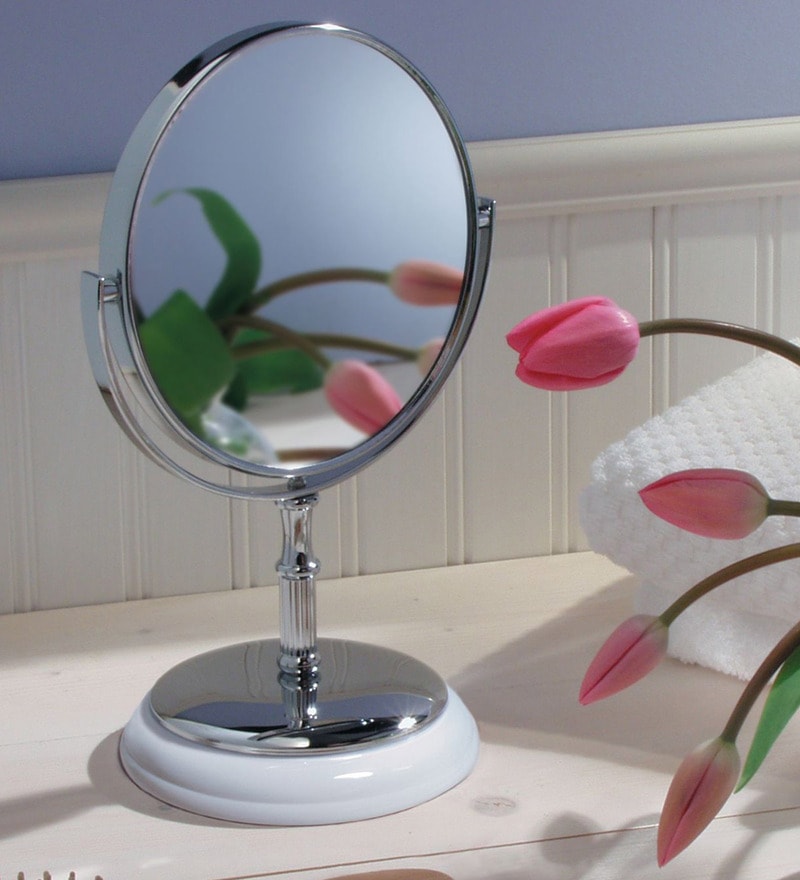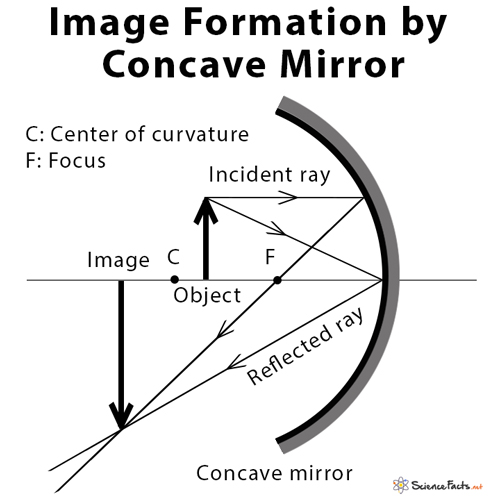Concave Mirror
Definition: What is Concave Mirror?
A concave mirror is a curved mirror that forms a part of a sphere and designed in such a way that rays of light falling on its shiny surface converge upon reflection. Hence, it is also called a converging mirror. A concave mirror produces both real and virtual images, which can be upright or inverted. The size of the image can be bigger or smaller than the object. The nature, size, and position of the image depend on the position of the object.

Ray Diagram for Concave Mirror
Terms Used in Concave Mirror Imaging
- Incident ray – The ray of light that is incident on the surface
- Reflected ray – The ray of light that is reflected from the surface
- Center of curvature – The center of the sphere from which the concave mirror has been constructed
- Radius of curvature – The radius of the sphere from which the concave mirror has been constructed
- Pole – The mid-point of the concave mirror
- Principal axis – An imaginary line that connects the pole and the center of curvature
- Focus – A point on the principal axis where rays of light that are parallel to the axis converges after reflection
- Focal length – The distance between the pole and the focus and is one-half of the radius of curvature
- Object distance – The distance between the object and the pole
- Image distance – The distance between the image and the pole

Applications of Concave Mirror
- In torchlight, headlamp, vehicle headlight, searchlight, and lighthouse, where a beam of light is converged to a certain point thus giving a better focus
- As vanity mirrors for facial makeup and as shaving mirrors for shaving
- In solar ovens to collect an enormous amount of solar energy and concentrate it at a point for heating and cooking
- By dentist to examine teeth and ENT specialist to observe a magnified image of the ear canal
- In an electron microscope, astronomical telescope, and visual bomb detectors
Difference between Concave Mirror and Convex Mirror
Concave Mirror vs. Convex Mirror |
||
| Property | Concave Mirror | Convex Mirror |
| Other names | Converging mirror | Diverging mirror, fish-eye mirror |
| Reflecting surface | Curved inwards | Curved outwards |
| Center of curvature | Lies on the same side of the reflecting surface | Lies on the opposite side of the reflecting surface |
| Focus and focal length | Lies in front of the mirror and focal length is positive | Lies behind the mirror and focal length is negative |
| Image | Real and inverted, except when the object is placed between the pole and the focus. In that case, the image is virtual, upright, and enlarged. | Virtual, upright, and diminished |
| Image size | Can be smaller, equal to, and bigger than the object depending on the position of the object | Smaller than the size of the object |
| Image position | Can be anywhere on principle axis depending on the position of the object | Always within the focus |
| Image projection | Only real image can be projected on a screen | Cannot be projected on a screen |
| Uses and applications | Reflecting telescope, headlamp, searchlight, and torchlight | Side view mirrors in vehicles and as security mirrors in grocery stores and supermarkets |
Article was last reviewed on Tuesday, July 7, 2020







